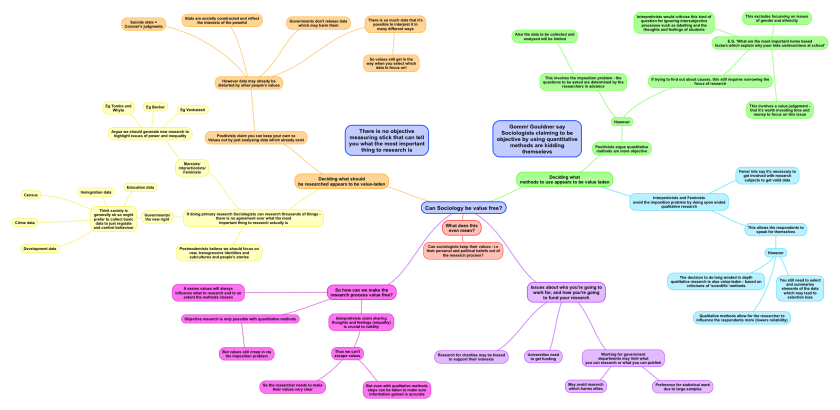Last Updated on October 10, 2022 by Karl Thompson
Subcultural Theory: The Basics
A Subculture is a group that has values that are different to the mainstream culture. Subcultural theorists argue that deviance is the result of whole groups breaking off from society who have deviant values (subcultures) and deviance is a result of these individuals conforming to the values and norms of the subculture to which they belong.
In contrast to Social Control theorists, it is the pull of the peer group that encourages individuals to commit crime, rather than the lack of attachment to the family or other mainstream institutions. Subcultural theory also helps explain non-utilitarian crimes such as vandalism and joy riding which strain theory cannot really explain. Deviance is a collective response to marginalisation.
four subcultural social theorists of deviance you should know about…
1. Albert Cohen’s Status Frustration Theory
2. Cloward and Ohlin’s three types of subculture
3. Walter Miller – the focal concerns of the working class
4. Charles Murray – the underclass and Crime (links to the New Right)
Albert Cohen: Deviant Subcultures emerge because of Status Frustration
Albert Cohen argues that working class subcultures emerge because they are denied status in society. Just like Merton, Cohen argued that working class boys strove to emulate middle-class values and aspirations, but lacked the means to achieve success. This led to status frustration: a sense of personal failure and inadequacy.
Cohen argued that many boys react to this by rejecting socially acceptable values and patterns of acceptable behaviour. Because there are several boys going through the same experiences, they end up banding together and forming delinquent subcultures.
This delinquent subculture reverses the norms and values of mainstream culture, offering positive rewards (status) to those who are the most deviant. Status may be gained by being malicious, intimidating others, breaking school rules or the law and generally causing trouble.
This pattern of boys rejecting mainstream values and forming delinquent subcultures first starts in school and then becomes more serious later on, taking on the form of truancy and possibly gang membership
Cloward and Ohlin’s 3 types of subculture
Cloward and Ohlin develop Cohen’s subcultural theory further, expanding on it in order to try and explain why different types of subculture emerge in different regions. They suggest that the ‘illegitimate opportunity structure’ affects what type of subculture emerges in response to status frustration – The varied social circumstances in which working-class youth live give rise to three types of delinquent subculture.
1. Criminal Subcultures are characterised by utilitarian crimes, such as theft. They develop in more stable working class areas where there is an established pattern of crime. This provided a learning opportunity and career structure for aspiring young criminals, and an alternative to the legitimate job market as a means of achieving financial rewards. Adult criminals exercise social control over the young to stop them carrying out non-utilitarian delinquent acts – such as vandalism – which might attract the attention of the police.
2. Conflict subcultures emerge in socially disorganised areas where there is a high rate of population turnover and a consequent lack of social cohesion. These prevent the formation of stable adult criminal subcultures Conflict subcultures are characterised by violence, gang warfare, ‘mugging’ and other street crime. Both approved and illegal means of achieving mainstream goals are blocked or limited, and young people express their frustration at this situation through violence or street crime, and at least obtain status through success in subcultural peer-group values. This is a possible explanation for the gang culture which is increasingly appearing in run down areas of the UK, and possibly explains the UK riots of 2011.
3. Retreatist subcultures emerge among those lower class youth who are ‘double failures’ – they have failed to succeed in both mainstream society and in the crime and gang cultures above. The response is a retreat into drug addiction and alcoholism, paid for by petty theft, shoplifting and prostitution
Evaluations of consensus subcultural theories
- Paul Willis’ 1977 study of the Counter-School-Culture represents a Marxist critique of consensus subcultural theory. Willis argued that the working class lads formed a subculture in order to ‘have a laff’ in a school system which they had accurately identified as being irrelevant to their futures. Unlike Cohen, these lads never aspired to be middle class, they identified themselves as working class, rejected middle class aspirations, and rejected the middle class system of the school – thus why Willis coined the term ‘counter (against) school culture’.
- David Matza has developed what might cautiously be termed an Interactionist approach to understanding subcultures. Matza suggested that there were no distinct subcultures among young people. Rather, all groups in society share a set of subterranean values. These are simply deviant values that encourage us to go against social norms – the urge to party hard, drink too much, swear, stealing, punch the idiots you work with and sleep with your brother’s wife etc. These are usually held under control, but sometimes emerge at peak leisure times – weekends, holidays and so on. The difference between a persistent offender and a law-abiding citizen is simply how often and in what circumstances these subterranean values emerge.
- Postmodernists point out that the nature of subcultures today has changed, in that subcultures are much more common today than they were in the 1960s. Today, subcultures are just a normal part of life. Subcultural theory assumes that there are ‘mainstream norms and values’ which subcultures deviate from. This is wrong according to Postmodernism – in society today, deviance and hence subcultures are ‘normal’, which renders the whole of subcultural theory irrelevant in helping us to understand crime and deviance.
Signposting and Related Posts
Subcultural theories of deviance are the second group of theories of crime on the A level crime and deviance specification (AQA), normally taught after functionalist and strain theories.
The Functionalist Perspective on Crime and Deviance








